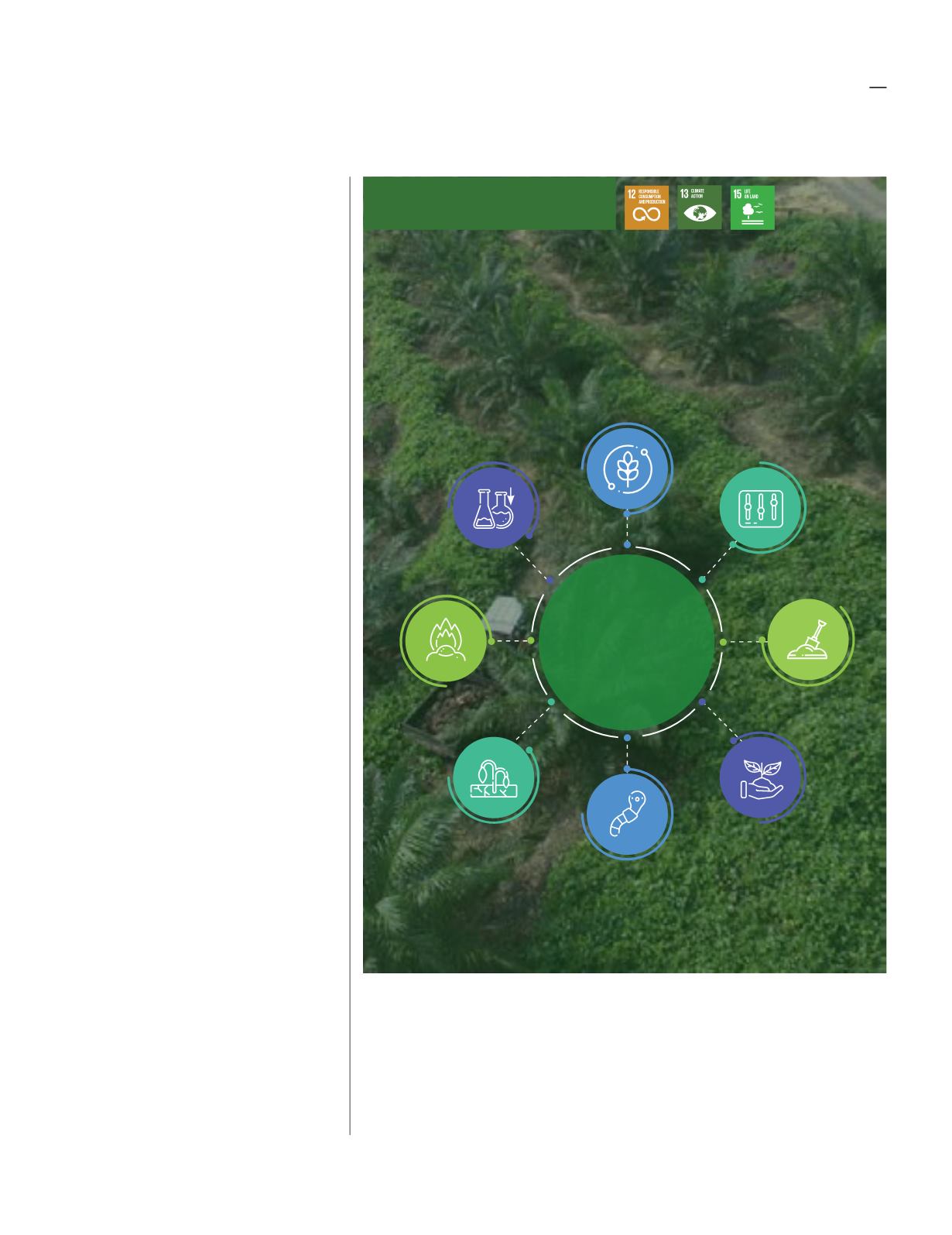

migratory birds and elephants and
habitat for jungle flora and fauna.
Soil Management
We follow best industry practices,
e.g. establishing cover crops
such as
Mucuna Bracteata,
Calopogonium Mucunoides
and
Calopogonium Coeruleum,
alone
or in mixture, to improve soil
properties and lower carbon
dioxide emissions. Vetiver grass
has been planted along the ponds,
bunds and field drains to reduce
erosion and prevent landslips.
Vetiver grass is a deep-rooted grass
and is known for its high tolerance
of heavy metals, phosphates,
nitrates and agricultural chemicals.
In addition, no planting is done in
steep areas i.e. those with a slope
of more than 20°.
Our estate put into practice
sustainable land application
methods that adhere to our ‘zero
waste’ policy. FFB that have been
harvested and sent to the mill for
processing will end up as Empty
Fruit Bunch (“EFB”). EFB is used
by applying directly on to the field.
Furthermore, compost can be
formed from a mixture of shredded
empty fruit bunches (“ËFB”) and
palm oil mill effluent (“POME”)
which is subsequently applied to
the estate. We also have in place
furrow system that helps to channel
POME directly on to the estate.
These practice helps provide an
organic source of nutrient and
reduces our reliance on inorganic
fertilizer.
Biological controls against pests
Beneficial plants such as
Turnera Subulata, Antigonan Leptopus
and
Casia
Cobanensis
are planted to attract predators (insects) of leaf pests. These
predators feed on leaf pest larvae thereby minimizing the use of pesticides.
The use of barn owls in our estates help to suppress the rodent population
and the placement of pheromone traps to capture Rhinoceros beetles are
among methods that have been adopted and proven effective.
Mucuna Bracteata
is a leguminous plant originating from India. Known
as “green manure”, they are highly effective in preventing soil erosion
and improving soil conditions through natural soil fertilization and
aeration process. Its nitrogen regulating qualities helps keep soil
temperatures low during hot seasons. We value its fast-growing
characteristics which allow for rapid ground cover and helps suppress
weed growth.
Total
Mucuna Bracteata
cover: 3,350 ha
23% of the Group’s total planted area
Crops that have you covered!
Desirable
Characteristics
of
Mucuna
Bracteata
Less Chemical
Usage
Low Seed Rate,
Easily Established
Good Control
Against Soil Erosion
Enriches
Degraded Soil
Vigorous
Growth
Tolerance to Pests &
Diseases
High Drought
Tolerance
High Biomass
Production
environment
33










